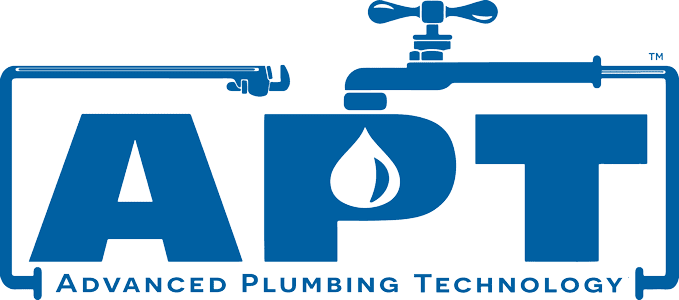Greener Flushing: Exploring Low-Flow Toilet Options
September 24th, 2023Posted by Brian Shoemaker
At Advanced Plumbing Technology, we understand the significance of sustainable practices in today’s world. One area that often goes overlooked when it comes to conserving water is our toilets. Traditional toilets can use an excessive amount of water with every flush, contributing to water wastage and higher utility bills. In this comprehensive guide, we delve into the realm of low-flow toilet options, shedding light on their benefits, types, installation process, and more. Join us as we embark on a journey towards a greener and more eco-conscious approach to flushing.
The Need for Sustainable Solutions
Water scarcity and environmental concerns have compelled us to reevaluate our consumption patterns. Every drop counts, and one of the prime areas where we can make a significant impact is our daily flushing habits. Traditional toilets consume around 1.6 to 3.5 gallons of water per flush, which can quickly add up to a substantial amount over time. By transitioning to low-flow toilets, we can drastically reduce water usage while maintaining optimal functionality.
Benefits of Low-Flow Toilets
Water Conservation
Low-flow toilets, also known as high-efficiency toilets (HETs), are designed to use significantly less water per flush. These innovative fixtures can use as little as 1.28 gallons of water per flush, cutting down water consumption by more than half compared to traditional models. This water-saving feature translates to not only a reduced environmental footprint but also lower water bills for homeowners.
Cost Savings
As water bills continue to rise, adopting cost-effective solutions becomes paramount. Low-flow toilets enable you to conserve water without sacrificing performance. While the initial investment might be slightly higher than that of conventional toilets, the long-term savings on utility bills can quickly offset this cost.
Eco-Friendly Living
Embracing a sustainable lifestyle involves making conscious choices, and installing low-flow toilets aligns with that philosophy. By choosing these water-efficient options, you contribute to water conservation efforts, reduce strain on local water sources, and minimize your carbon footprint.
Exploring Different Types of Low-Flow Toilets
Single Flush Toilets
Single flush low-flow toilets are equipped with a flush mechanism that releases a predetermined amount of water with each flush. These toilets are ideal for those who prefer a straightforward flushing experience. While they are effective in conserving water compared to traditional toilets, there are more advanced options available.
Dual Flush Toilets
Dual flush toilets provide users with a choice between two flush options: a lower-volume flush for liquid waste and a slightly higher-volume flush for solid waste. This versatility allows for even more precise water usage, as you can select the appropriate flush based on the type of waste being disposed of.
Pressure-Assisted Toilets
Pressure-assisted low-flow toilets utilize compressed air to force water into the bowl at a higher velocity. This technology ensures a powerful flush while using less water. Pressure-assisted toilets are particularly suitable for commercial settings where high traffic demands efficient performance.
Installation and Considerations
Installing low-flow toilets involves a relatively straightforward process, but there are a few considerations to keep in mind:
Water Pressure
Before installation, it’s essential to assess your home’s water pressure. Some low-flow toilets may require a certain level of water pressure to function optimally. If your water pressure is too low, you might need to explore pressure-boosting options.
Compatibility
Ensure that the low-flow toilet you choose is compatible with your existing plumbing system. Taking measurements and consulting with a professional plumber can help you make an informed decision.
Maintenance
Like any other fixture, low-flow toilets require regular maintenance to ensure they continue operating efficiently. Simple tasks such as checking for leaks, cleaning the flush mechanism, and addressing any issues promptly can prolong the lifespan of your low-flow toilet.
Making the Transition
Transitioning to low-flow toilets is a step towards a more sustainable future. To make the process smoother, here’s what you can do:
Research
Explore different brands and models of low-flow toilets to find the one that suits your needs. Look for user reviews and ratings to ensure you’re making an informed choice.
Consultation
If you’re unsure about the installation process or which type of low-flow toilet to choose, don’t hesitate to consult a professional plumber. They can provide valuable insights and ensure a seamless installation.
Water-Saving Habits
While low-flow toilets are incredibly efficient, adopting water-saving habits can further amplify your efforts. Simple practices like fixing leaks promptly, using a bucket of water for cleaning, and reducing flushing frequency can contribute to water conservation.
Conclusion
In a world where environmental concerns are at the forefront, embracing sustainable solutions is a responsibility we all share. Low-flow toilets offer a practical and effective way to conserve water without compromising on functionality. From reducing water bills to contributing to water conservation efforts, the benefits of low-flow toilets are undeniable. At Advanced Plumbing Technology, we are committed to providing you with the latest information and solutions for a greener future. Join us in making a positive impact—one flush at a time.
